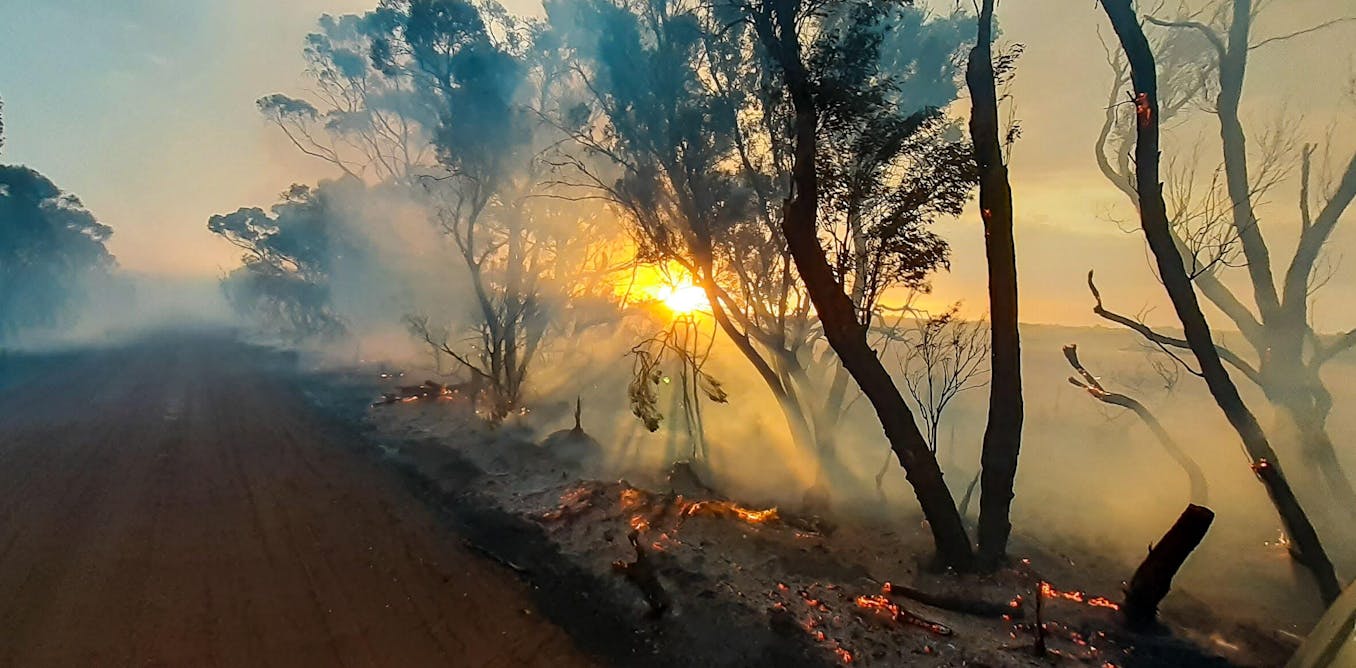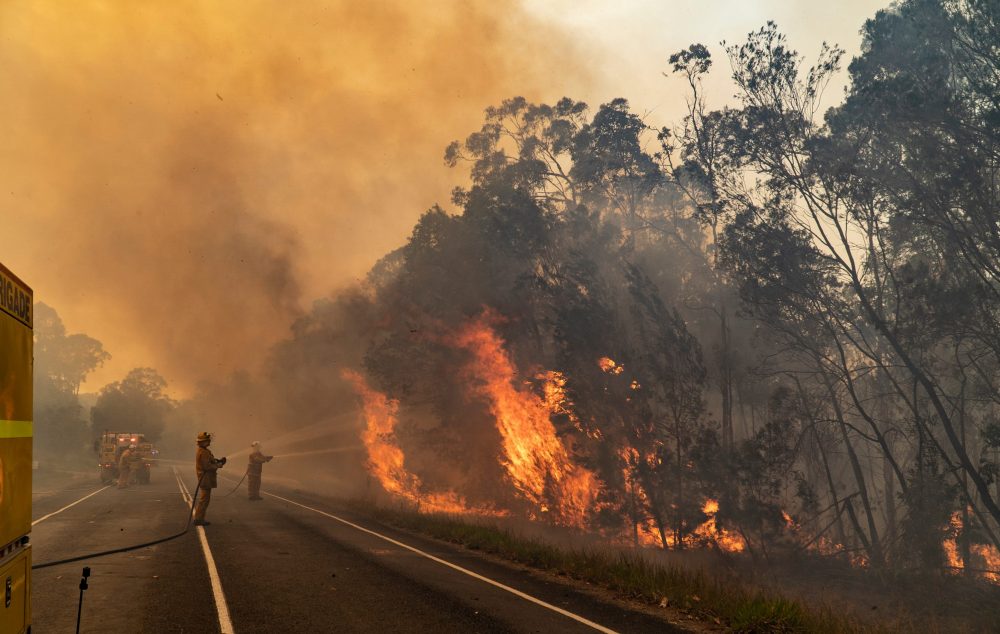Finest Practices in Bushfire Monitoring for Comprehensive Fire Defense
In the world of bushfire management, the mission for detailed fire defense requires a thorough approach that encompasses different critical facets. As we navigate through the nuances of these best practices, an exploration into the intricate web of methods and methods waits for, assuring a much deeper understanding of the diverse landscape of bushfire management for extensive fire protection.
Risk Assessment and Preparation
In bushfire management for fire security, the initial step involves conducting a detailed risk analysis and developing an extensive plan to mitigate possible dangers. Danger assessment is a critical procedure that includes identifying, evaluating, and evaluating possible dangers that could bring about a bushfire. This analysis takes into consideration different factors such as weather, topography, fuel lots, and human activities in the location. By recognizing these dangers, fire protection authorities can focus on areas that are most prone to bushfires and assign sources properly.
By having a well-defined strategy in location, emergency services can act promptly and successfully to secure lives, building, and the setting throughout a bushfire break out. Effective threat evaluation and planning are fundamental parts of bushfire administration for making certain thorough fire security.
Vegetation Monitoring Methods
After performing a complete risk assessment and establishing a comprehensive strategy for bushfire monitoring, the emphasis changes to executing efficient plants monitoring techniques. Plants monitoring plays an essential function in minimizing the strength and spread of bushfires.
Along with developing defensible room, prescribed burning is an additional important greenery management technique. Prescribed burns include intentionally establishing fires under regulated problems to lower the accumulation of gas, lower the likelihood of high-intensity wildfires, and promote ecological community wellness. By strategically burning areas with excess vegetation, gas degrees are lowered, making it harder for fires to spread out quickly and uncontrollably.

Area Interaction and Education
Reliable community involvement and education and learning are vital components in constructing a aggressive and resilient strategy to bushfire monitoring. By including community members in the preparation and application of bushfire monitoring approaches, stakeholders end up being energetic individuals in safeguarding their homes and areas. Community interaction fosters a feeling of shared obligation and encourages citizens to take possession of their security.
Education and learning plays a vital role in gearing up people with the understanding and abilities required to reduce bushfire threats effectively. Supplying instructional resources ablaze prevention, emptying treatments, and the importance of early discovery can dramatically enhance community readiness. Informing homeowners on the local bushfire atmosphere, consisting of fire actions and risk variables, enables them to make educated choices during high-risk circumstances.
With recurring involvement and education and learning campaigns, areas can develop a cumulative understanding of bushfire dangers and job collaboratively to minimize the effect of wildfires. By promoting a society of readiness and strength, community members can improve their capacity to react efficiently to bushfire emergencies and safeguard both lives and property.

Very Early Discovery and Caution Solutions
Community interaction and education work as foundational columns in developing positive bushfire administration methods, laying the groundwork for the implementation of durable try this web-site very early detection and caution systems. Early discovery and warning systems are vital elements in alleviating the influence of bushfires on areas and the setting. These systems encompass a series of techniques and modern technologies click to find out more intended at determining and notifying authorities and citizens to possible fire outbreaks promptly and effectively.
One crucial element of early discovery systems is making use of innovative tracking modern technologies such as satellite images, drones, and climate stations to find signs of possible fire ignition. These technologies provide real-time data that can be analyzed to determine fire-prone areas and activate early cautions. Additionally, the assimilation of community-based surveillance networks and automated sharp systems can enhance the efficiency of very early detection efforts by entailing residents in reporting prospective fire hazards and getting prompt cautions.
Effective early discovery and caution systems depend on a multi-faceted technique that combines technological technology, community involvement, and quick emergency situation feedback protocols to make sure the prompt and worked with administration of bushfire cases. By buying these systems and promoting cooperation between stakeholders, communities can improve their durability to bushfires and lessen the associated risks.
Emergency Feedback and Evacuation Plans
A extensive and well-coordinated emergency situation action and evacuation strategy is necessary for efficiently safeguarding lives and building throughout bushfire incidents. These strategies need to be thoroughly crafted, thinking about variables such as the topography of the area, the thickness of greenery, and the possible speed and instructions of the fire's spread.
One important facet of an emergency feedback plan is the establishment of clear interaction channels to disseminate timely and precise details to homeowners and emergency situation responders. This can consist of using alarms, mobile notifies, social media, and community meetings to make certain that everybody is educated and recognizes what actions to take.
Emptying courses must be pre-identified and frequently maintained to guarantee they come throughout emergencies. Additionally, assigned emptying facilities need to be established to offer shelter, medical assistance, and support solutions to evacuees.
Normal drills and workouts are vital to familiarize locals with emptying treatments and check the performance of the strategy. By continually evaluating and upgrading emergency feedback and discharge plans, communities can enhance their readiness and durability when faced with bushfire dangers.
Verdict
In verdict, effective bushfire management needs a thorough technique that consists of danger evaluation, vegetation management, community involvement, very early detection systems, and emergency situation feedback strategies. By applying these ideal methods, communities can much better shield themselves from the terrible influences of bushfires - BAL Report. It is vital to prioritize aggressive procedures to alleviate the threats presented by bushfires and make certain the More about the author safety and well-being of individuals and areas at risk
After carrying out a thorough threat evaluation and creating a detailed plan for bushfire administration, the focus shifts to executing reliable greenery monitoring methods.Reliable neighborhood involvement and education are crucial elements in constructing a resilient and aggressive technique to bushfire administration. By including neighborhood members in the preparation and implementation of bushfire administration approaches, stakeholders become active individuals in securing their neighborhoods and homes.Neighborhood involvement and education and learning serve as foundational pillars in developing aggressive bushfire management practices, laying the groundwork for the application of robust early discovery and caution systems.In verdict, effective bushfire management needs a detailed approach that includes risk evaluation, plant life management, area interaction, very early detection systems, and emergency action strategies.